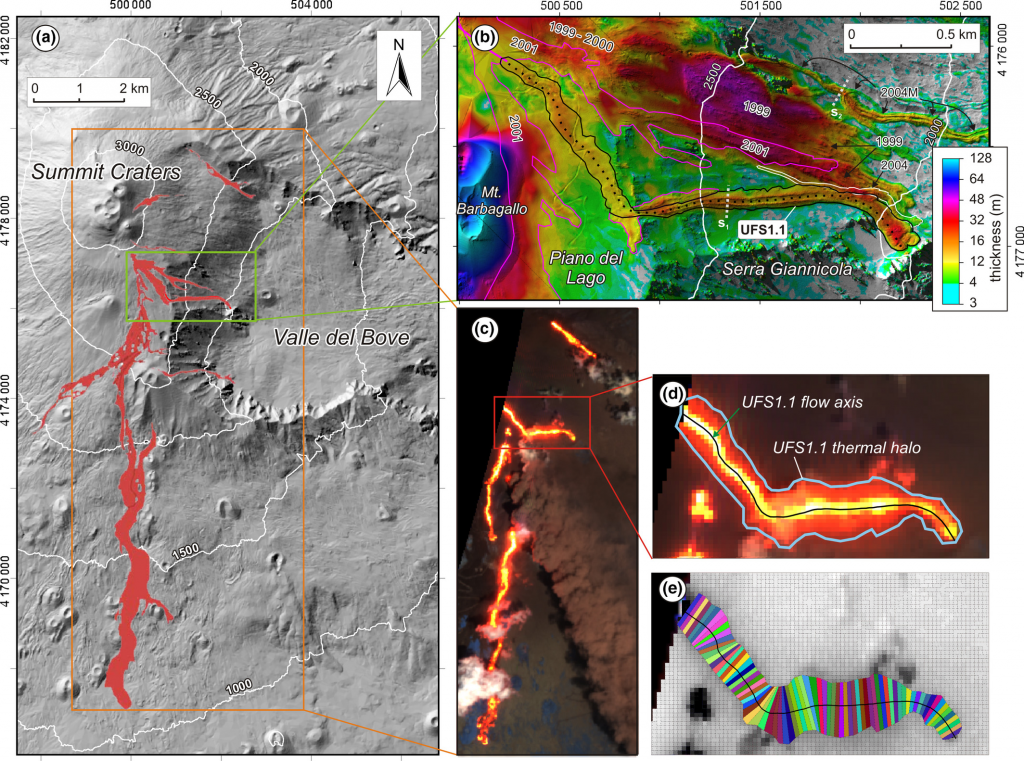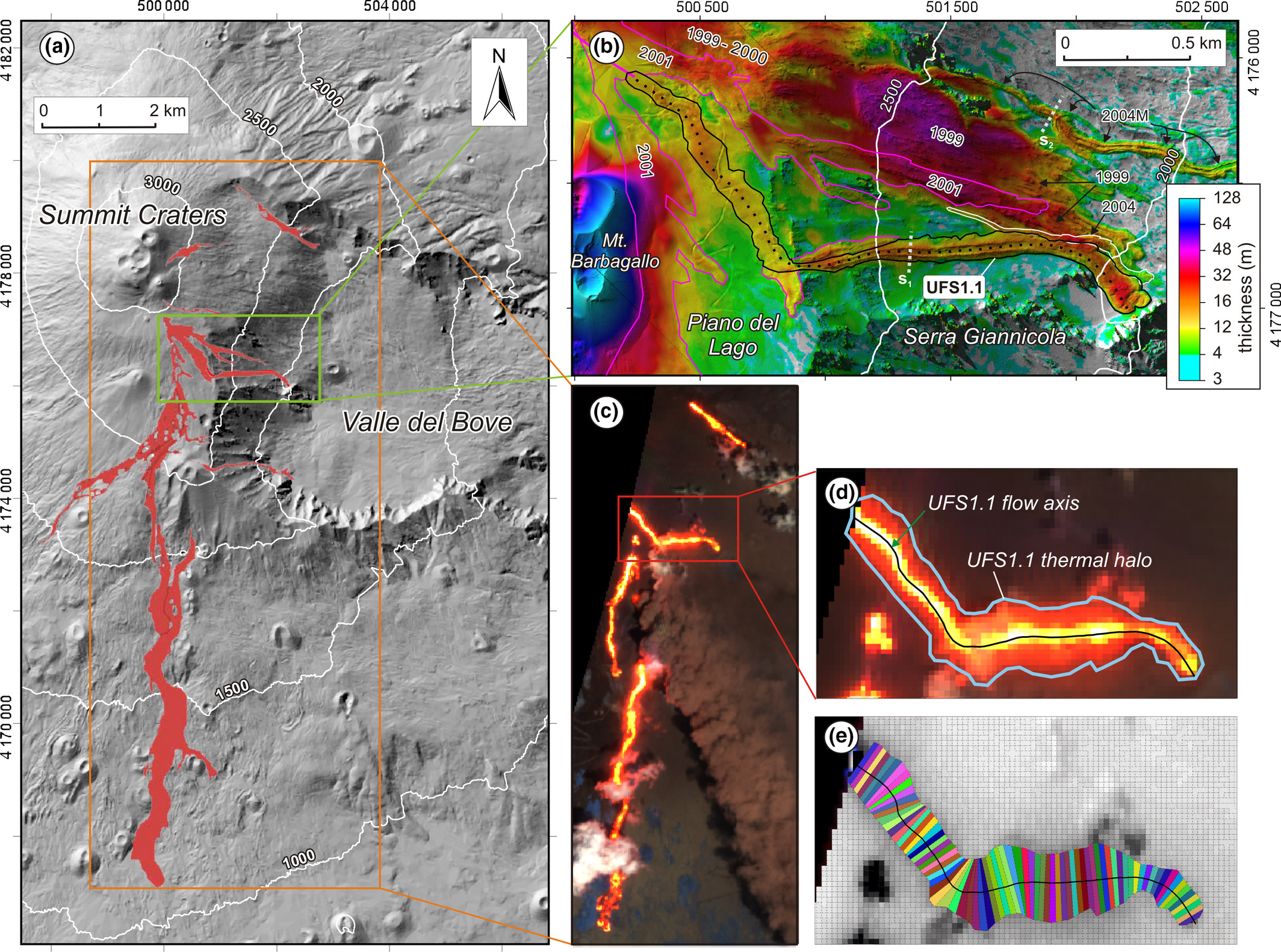Combined morphological and thermal analysis of lava flows: A way to boost understanding of emplacement dynamics

Input data: (a) shaded relief of the TINITALY DEM (Tarquini et al., 2012b) with the final July-August 2001 lava flows (modified after Behncke & Neri, 2003); (b) shaded relief of the 2004 LIDAR DEM (Mazzarini et al., 2005) over the DEM difference map 2004 LIDAR DEM – TINITALY. 1999-2000, 2001 and 2004 lavas are labelled, black dotted line is the axis of UFS1.1; “2004M” indicates the main flow unit active at the time of the LIDAR survey (Mazzarini et al., 2005); s1 and s2 are the profiles in Figure 2c-d; (c) the portion of the EO-1 ALI (Advanced Land Imager) image acquired on 22 July 2001 showing the active lava flows (courtesy of the U.S. Geological Survey, RGB image obtained from channels B10, B9, B8 respectively); (d) zoom on the thermal anomaly generated by UFS1.1; (e) vectorised pixels of (d) used for radiance measurements, with a long-flow sectors used to measure the integral radiance (Figure 4) [Colour figure can be viewed at wileyonlinelibrary.com]
Tarquini S. and D. Coppola (2018)
Terra Nova, https://doi.org/10.1111/ter.12328
Abstract
During emplacement, lavas modify the pre-existing topography and release a large amount of heat. In spite of the relevance of both heat and mass release, combined morphological and thermal analyses have been seldom carried out at a flow-field scale. Here, we consider a channelised lava flow unit formed at Mt Etna during the 2001 flank eruption, and we show that, by combining a morphological analysis of the pre- and post-emplacement topography with the analysis of the syn-eruptive thermal signature, critical insights about the processes driving mass and heat dissipation can be derived. Our results suggest that, in the considered lava flow, the pre-emplacement slope controls heat dissipation and can influence the thickness of the final lava deposit, with possible implications for hazard assessment. The width of the lava channel, instead, appears less sensitive to the pre-emplacement slope, and tends to regularly increase with increasing distance from the vent.



Devi effettuare l'accesso per postare un commento.